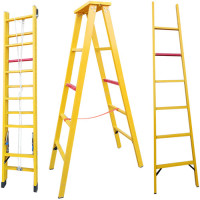Looking for a reliable and durable solution for elevated platforms? Look no further than fiberglass platforms. Fiberglass platforms, crafted from fiberglass reinforced plastic (FRP), offer exceptional strength, stability, and longevity, making them ideal for various industrial, commercial, and outdoor applications.
These platforms come in a range of sizes, shapes, and configurations to suit different needs, whether you're creating a work platform in a factory, a walkway in a chemical plant, or a viewing platform in a recreational area. Their versatility and adaptability make them a popular choice across industries.
One of the key advantages of fiberglass platforms is their resistance to corrosion, chemicals, and extreme weather conditions. Unlike traditional materials like wood or metal, fiberglass platforms do not rust, rot, or degrade over time, ensuring they maintain their structural integrity even in harsh environments.
In summary, fiberglass platforms offer a reliable and long-lasting solution for a wide range of applications. With their strength, stability, and resistance to environmental factors, they provide a safe and durable platform for various industrial and commercial needs.
Components for Fiberglass Platforms:
Creating a high-quality fiberglass platform involves carefully selecting and assembling these essential components to ensure durability, stability, and safety in diverse industrial, commercial, and outdoor environments. By choosing the right materials and design elements, you can build a fiberglass platform that meets your unique needs and exceeds expectations.
When it comes to crafting a durable and reliable fiberglass platform, several key components come into play. Let's delve into the essential elements needed to create a sturdy fiberglass platform tailored to your specific needs.
- Fiberglass Reinforced Plastic (FRP) Panels: At the core of any fiberglass platform are FRP panels. These panels, composed of glass fibers embedded in a polymer resin matrix, provide the structural strength and stability needed to support heavy loads and withstand environmental factors. They are available in various thicknesses and configurations to meet different load-bearing requirements.
- Support Structure: The support structure serves as the framework for the fiberglass platform, providing stability and rigidity. It is typically constructed from materials like steel or aluminum and is designed to securely hold the FRP panels in place. The support structure is crucial for ensuring the overall strength and integrity of the platform.
- Fasteners and Hardware: To assemble the fiberglass platform, you'll need an array of fasteners and hardware, including bolts, nuts, washers, and anchors. These components play a vital role in securely attaching the FRP panels to the support structure, ensuring that the platform remains stable and safe for use.
- Edge Guarding and Handrails: Depending on the application and safety requirements, edge guarding and handrails may be necessary components of the fiberglass platform. Edge guarding helps prevent accidents by creating a barrier around the perimeter of the platform, while handrails provide additional support and stability for users.
- Surface Treatment: To enhance safety and usability, the surface of the fiberglass platform may undergo various treatments. This could include adding non-slip coatings or textures to improve traction, as well as applying UV-resistant coatings to protect against sun damage and fading.
- Accessories and Add-Ons: Depending on the intended use of the platform, you may also incorporate various accessories and add-ons, such as stairs, ladders, safety gates, or equipment mounts. These additional features can further customize the platform to meet specific functionality and safety requirements.




